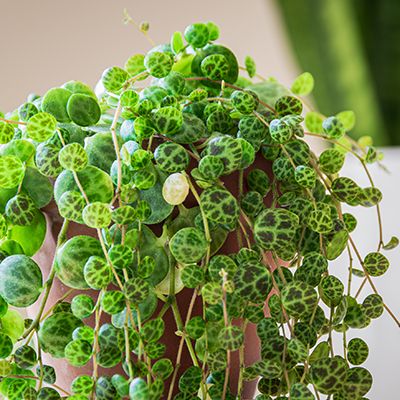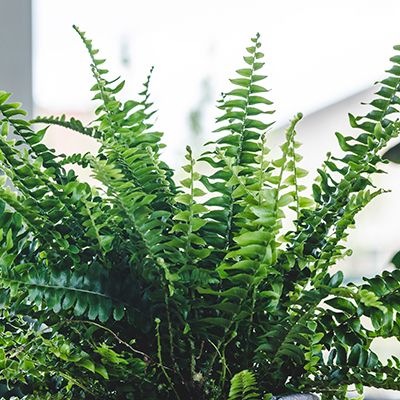


Houseplants
Technically, there is no such thing as a houseplant. All plants or their ancestors grew out of doors, originally, and were adapted to their own specific environment. When you bring a plant indoors, you subject it to all kinds of stress and to conditions likely to cause its demise. Plants are more likely to die indoors than out of doors and so the homeowner will have to take special precautions in order to have the plant survive indoors.
There is no question that healthy, attractive, green plants will enhance the appearance of a home’s décor. Green plants have also proved to improve the mental and physical well-being of its occupants. Children testing in a classroom filled with green plants perform at a higher level than those in a barren classroom. Bringing some of nature’s greenery into the home is a desirable activity and this despite the fact that you may be putting the plants into an unhealthy environment. Remember, plants are living things and in order to prosper, they must have a suitable environment. This then becomes the homeowner’s responsibility.
The basic needs of all plants are met by four factors: sunlight, suitable soil, adequate water and a favorable temperature. A fifth factor would be to exclude or prevent disease or harmful insects.
Sunlight: Few plants can survive if they receive only indoor lighting. Sunlight is a mixture of all colors of light (violet, Indigo, blue, green, yellow, orange, red and infra-red). Plants use mainly the red and blue wavelengths. Indoor light bulbs produce mostly yellow, which plants don’t use and some red. For plants to thrive indoors they must be placed near windows or glass doors which admit natural sunlight. Even the window glass filters out at least 40% of the natural light the plant needs. A rough measure of adequate natural light for plant growth is to place a sheet of white paper in the proposed plant location. Hold your hand about 6 inches from the paper and observe the shadow. If there is a good strong shadow, there is probably enough light for the plant to survive. For plants to bloom, they require some direct sunlight. African violets and Peace Lilies will bloom with only 2 or 3 hours of direct sunlight. At different times of the year, sun will not enter windows as it did at an earlier time and so the plant(s) may have to be moved. Placing a lighted lamp next to the plant will be of little value. Some gardeners will grow plants under fluorescent “grow lights” placed 16 to 24 inches from the plants for about 16 hours.
For most homeowners just beginning to grow indoor plants best results will be had by selecting some of the darkest green plants (no variegated or multicolored or flowering). Place them where you think they will be happy (not where you will be happy) and see how they get along. As you get used to handling your plants, you can move to more difficult plants (dracaena, the various fig trees, palms, etc.).
Suitable Soil: Indoor plants are potted in many different types of potting media. It is not necessary to have a different potting mix for each different plant. The wisest thing is to start with a dependable potting mix and go from there. We recommend Master Nursery Gardener’s Gold, which Wegman’s helped to formulate. A good potting mix should have at least six different ingredients. Master Nursery Gardener’s Gold has nine. Never use any or all of the soil dug from an outside garden. Garden soil does not have the proper consistency for good drainage or adequate nutrients and may contain disease organisms. As you become familiar with your plants, you may want to add sand, perlite or bark to your potting mix increase drainage or water holding capacity. Neither is it advisable to put rocks in the bottom of the container to improve drainage because the potting mix will drain by itself. The rocks will reduce the amount of soil available for root development. The potting soil has enough nutrients to maintain its plant for three or four months. After that, the homeowner should fertilize the plant lightly, once a month between Valentine’s Day and Halloween, with a water soluble product such as Maxsea acid plant food or with Osmocote Plus every six months.
About every three years, it will be time to repot your houseplant(s). It’s time when the plants have filled the pots and are pushing against the sides or when you see roots coming out through the drainage hole. Knock the plant out of the pot by tipping the plant over and tapping the edge of the pot on a solid wall, fence or table. Otherwise use a mallet or the heel of your hand to pound the top edge of the pot to knock it loose. Next, use a sharp knife and cut 1 or 2 inches off the soil ball all the way around plus one or two inches off the bottom of the root ball. Place the plant back in its container with Master Nursery Gardener’s Gold to fill the spaces. Tamp the soil firmly with a broom stick or something similar. To compensate for the missing roots, remove about ¼ of the green foliage from the top.
Adequate Water: More plants die from overwatering than for any other reason. When you do irrigate your plant(s), add water until it runs out the bottom of the pot. Let the surface 1 or 2 inches dry out between watering. Lift your potted plant. If it feels heavy, the soil contains adequate water. When the pot’s weight is light, it is time to water the plant.
Indoor plants often suffer from low humidity. The most common symptoms are brown leaf tips. The humidity in the plant’s normal environment or in the greenhouse where it was propagated ranged between 40% and 70%. Indoors, the humidity may be 30% to 40%. During the winter, the humidity often drops as low as 10%. Low humidity causes the brown leaf tips. Grouping plants or placing them on a pebble tray filled with water will increase the humidity around each of the plants and reduce the number of brown tips.
Favorable Temperature: Indoor temperatures are favorable for “houseplants”. Homes left unheated at night during the winter in the Bay Area are not a problem for houseplants because that is the dormant period for most of them when they would normally expect low temperatures.
Indoor plants are subject to diseases and insect attack. When you can’t identify the problem, bring the plant or a sizable sample to the nursery for identification. One of the best things you can do for a plant that is not as good looking as the day you took it home is to put it on the porch or patio or a place where it will get filtered sun or morning sun for a couple of months in mid-summer. If it perks up, reevaluate its location and treatment indoors.
Finally, if you are just learning how to care for plants indoors, do not spend a lot of money on an expensive tree, palm or flowering plant. Instead concentrate on the plant which will survive with minimal care and light.
Minimal care and light: Aspidistra, Snake Plant, Parlor Palm, Peace Lily, English Ivy, Devil’s Ivy, Spider Plant, Philodendron and Grape Ivy.
Blooms with 1-2 hours of direct sun: Clivia, African violet, Peace Lily.